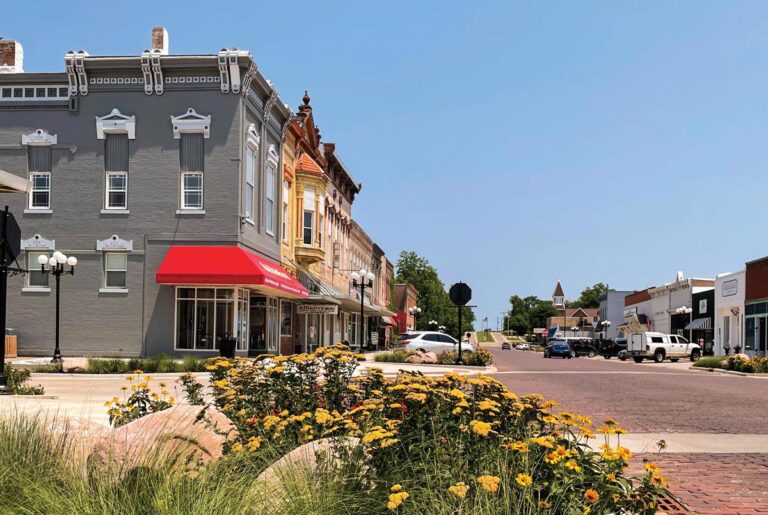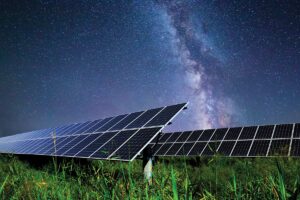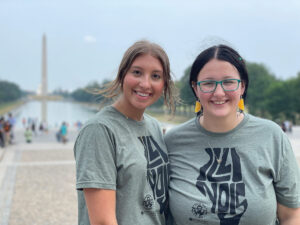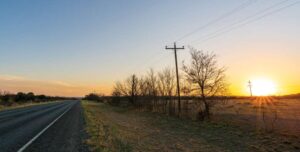For more than a quarter century, policymakers have wrestled with how to bridge the digital divide and bring broadband access to rural America. Yet the gap persists even as we see the light at the end of the tunnel of the COVID-19 pandemic.
The good news, there is strong bipartisan support in Congress and within the Biden administration for tackling the rural broadband challenges.
President Joe Biden’s American Jobs Plan envisions spending $100 billion to connect the more than 35 percent of rural Americans who lack access to broadband at minimally acceptable speeds. The president also prioritized the needs of rural America in his address to Congress, again stressing the need to modernize rural infrastructure and expand broadband access.
In an April 23 visit to New Hampshire Electric Cooperative, Vice President Kamala Harris praised the work of electric cooperatives in delivering affordable broadband internet access, comparing it to the initial co-op electrification efforts in the 1930s.
“It’s the same thing that our country decided to do in 1936, saying, ‘Let’s get electricity to everybody,’ and rural America should not be left out of that priority,” Harris said.
Last year, Congress approved $7 billion in funding for broadband deployment and adoption as part of a COVID-19 relief package to benefit communities on the wrong side of the digital divide.
There is still critical work to be done.
The COVID-19 pandemic forced American families, businesses and policymakers to rethink the practice and delivery of health care, education and professional services. It spotlighted the critical need for high-performing broadband for all Americans. As our nation transitions to a post-pandemic period, we must keep the need for rural broadband access front of mind.
Simply stated, consumers and businesses in rural America will struggle to emerge into a changed world that depends more each day on remote health care, remote education and remote work.
The Federal Communications Commission has taken notable steps to accelerate rural broadband deployment through a series of reverse auctions. The most recent, the Rural Digital Opportunity Fund Phase I auction, is on the verge of providing $9.2 billion to telecommunications providers to help bridge the gap. Now, the commission must ensure that auction winners provide the quality broadband service they promised.
In addition, Congress must provide sustained investment in broadband programs across federal agencies, targeting resources at unserved and underserved communities. This is critical if we are to reach the goal of universal access to high-speed broadband and not today’s minimum standard. How much investment will it take? Recent federal agency estimates peg the cost of truly bridging the digital divide between $80 billion and $150 billion over the next several years.
You can’t just throw money at this problem.
We also recommend increasing the minimum definition of broadband speed from 25/3 megabits per second to 100/100 Mbps. As the nation’s need for broadband access at higher speeds accelerates, maintaining the current 25/3 Mbps broadband definition standard leaves rural communities further behind.
In addition, we urge the FCC, as required by Congress, to improve broadband data collection and mapping to clarify existing gaps in coverage. It’s unacceptable that we have better maps of the moon than we do broadband service in rural America. These efforts are critical to ensuring that the needs of underserved or unserved rural communities are identified and addressed.
Electric co-ops aren’t simply advocating for rural Americans—they are part of the solution. Nearly 200 electric cooperatives are engaged in providing broadband to their consumers where it makes sense. In fact, electric co-ops were among the successful bidders in the FCC’s RDOF auction, winning $1.1 billion to serve more than 616,000 locations in 27 states.
There is tremendous bipartisan support for addressing the broadband connectivity needs of rural communities. Let’s take advantage of this momentum and work together to close the digital divide.









